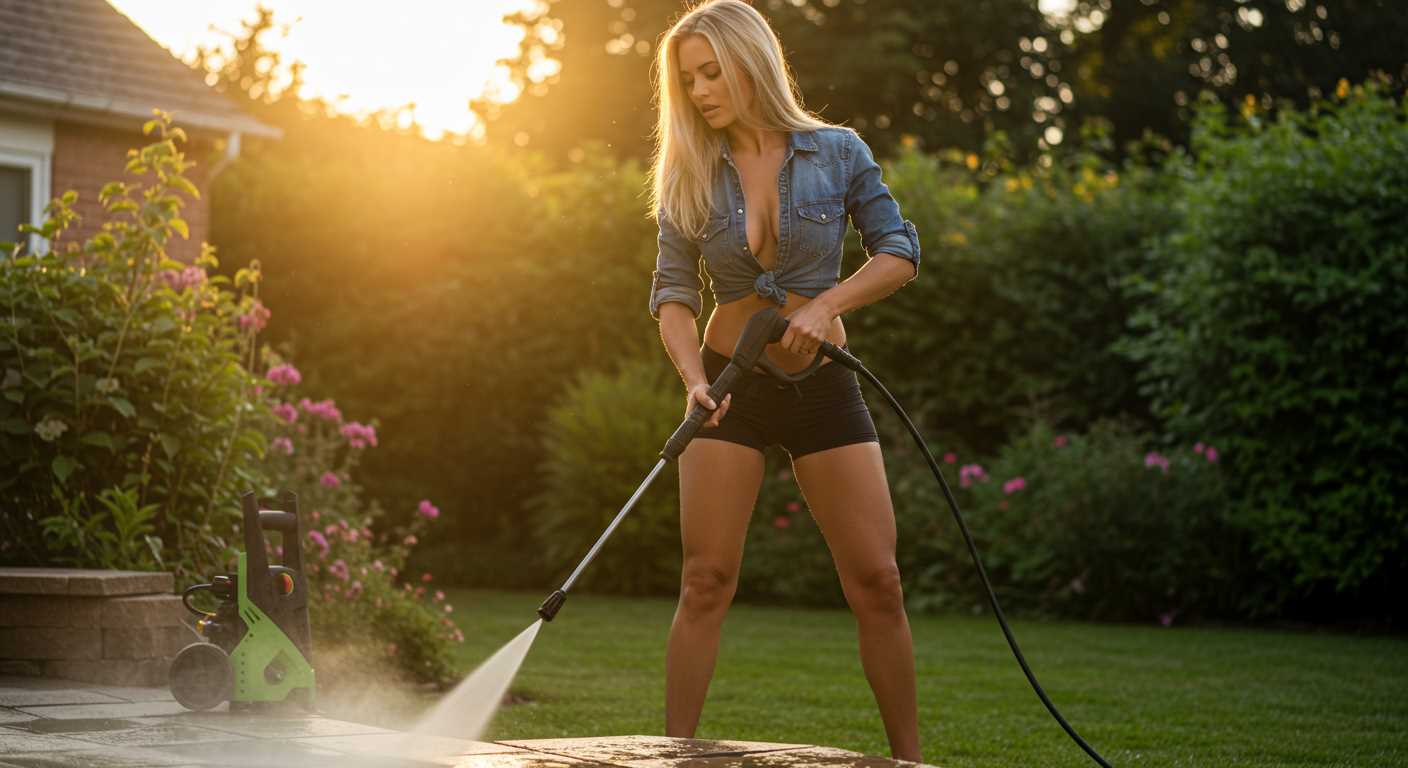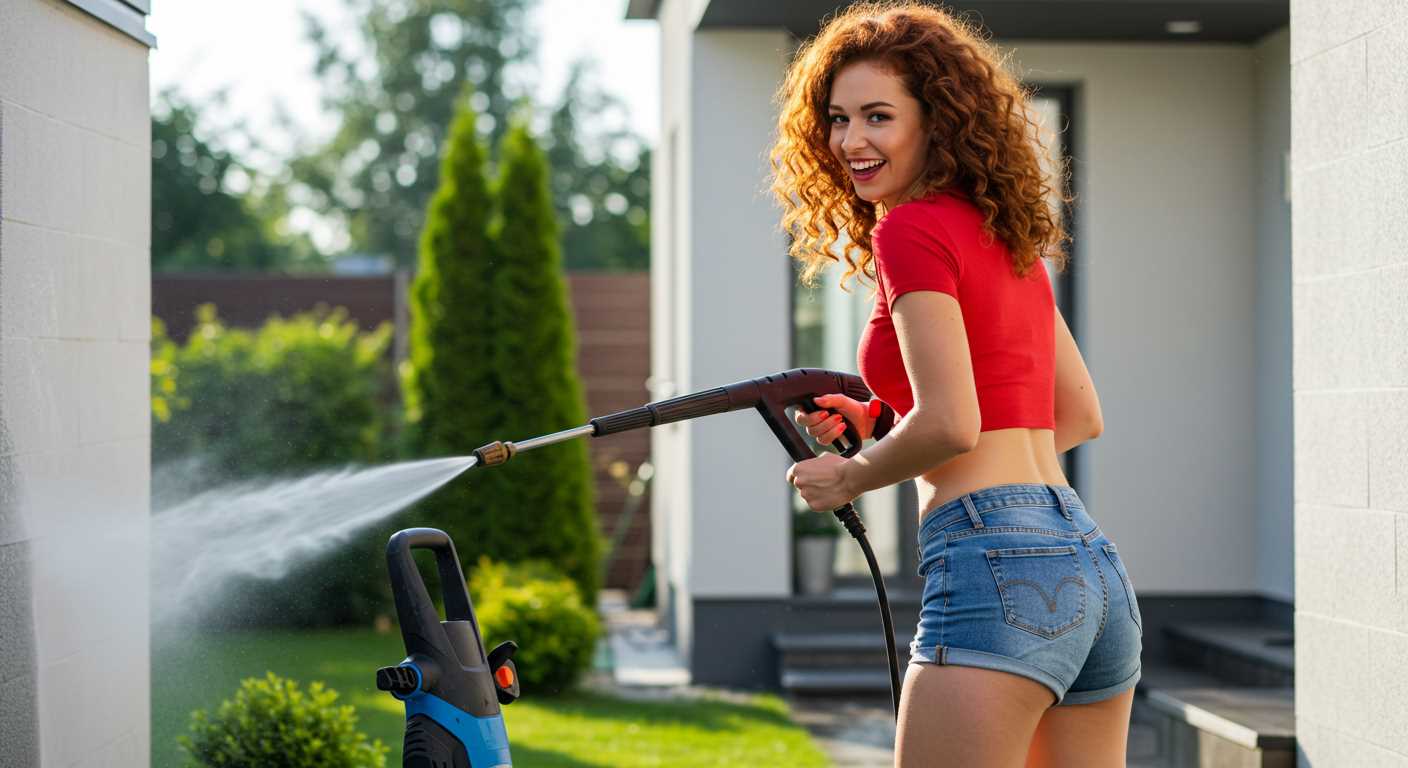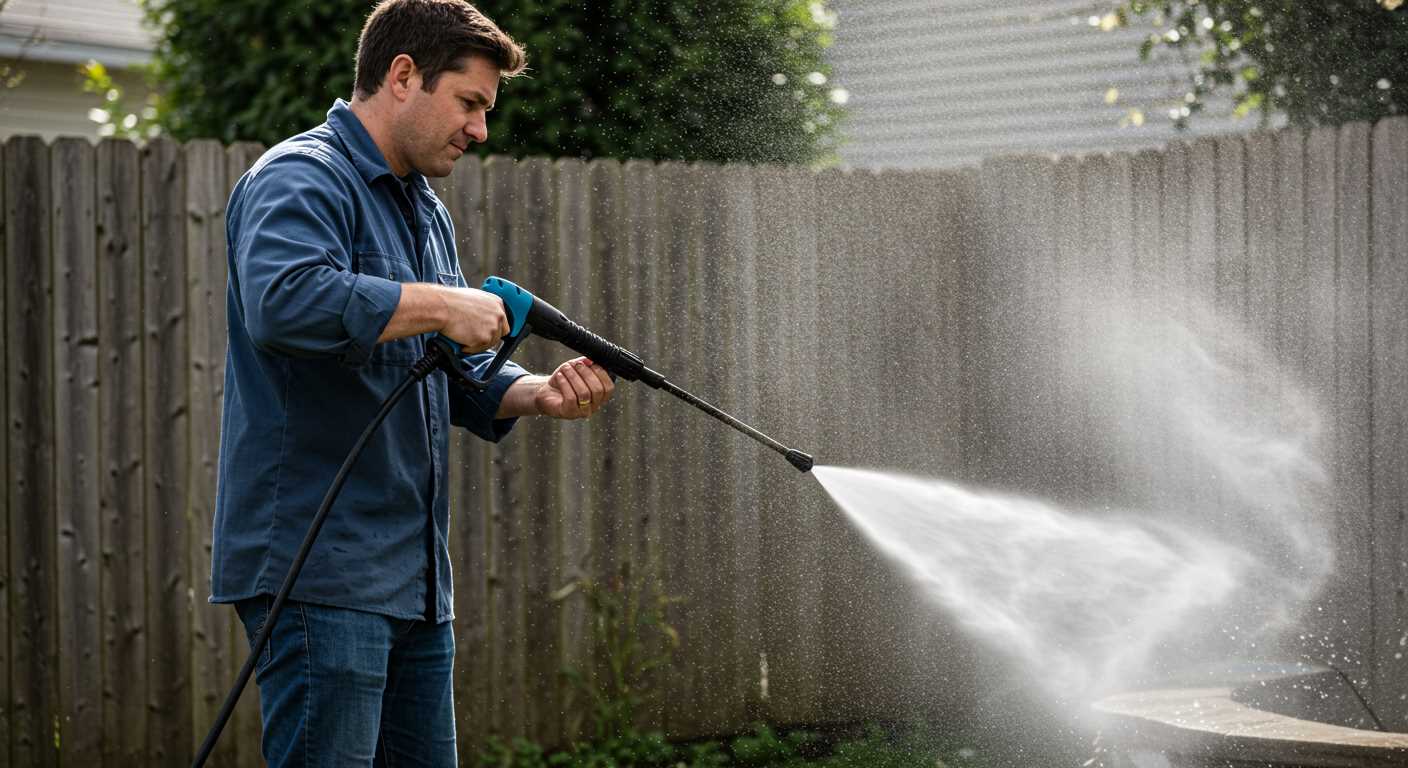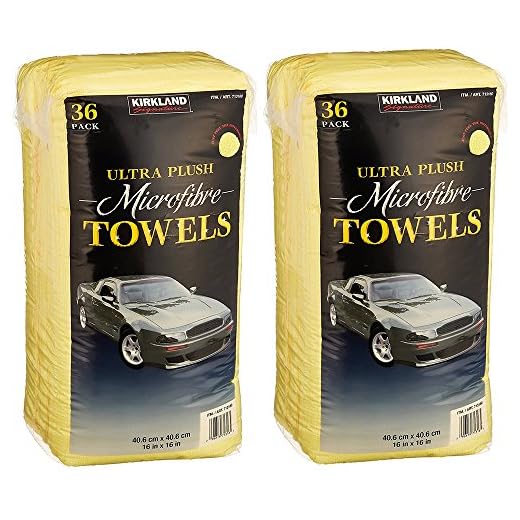



Using a high-pressure cleaning device on automotive finishes can be safe, provided specific guidelines are followed. The key lies in the correct pressure settings, nozzle selection, and distance from the vehicle. I recommend using a low-pressure setting, ideally below 1500 PSI, to mitigate the risk of harming the surface.
Applying a 25-degree or wider nozzle will help disperse the force, reducing the chance of scratching or stripping the coating. Keep a safe distance, approximately 2-3 feet away, while directing the jet of water. This distance creates a buffer that minimizes impact while effectively removing dirt.
It’s also crucial to avoid attacking sensitive areas such as edges, seams, and areas with existing damage, as these spots are more vulnerable. A thorough inspection before cleaning can help identify potential trouble spots and ensure that the cleaning method is appropriate for your vehicle’s finish.
Impact of High-Pressure Cleaning on Vehicle Finish
Using a high-powered cleansing device can lead to harmful effects on your vehicle’s exterior. I recommend keeping the nozzle distance at least 2 feet from the surface. This distance helps minimise the risk of stripping away clear coats.
Choose an appropriate nozzle; a wide-angle spray is safest for washing delicate finishes. Avoid focusing the jet on any one spot for too long, as this can wear down the protective layers of varnish and gloss.
Always consider the water temperature. Cooler water is safer for the finish than hot water, which can exacerbate chipping due to thermal expansion differences.
Pay attention to the pressure settings of the device. A lower setting, typically around 1200 to 1500 psi, is sufficient for surface cleaning without compromising the vehicle’s integrity. Higher settings may lead to problematic outcomes, especially on older or previously repaired surfaces.
It’s advisable to inspect the equipment before use. Damaged or worn nozzles can increase the force of the water stream, posing a risk to the paintwork. Additionally, be aware of any existing blemishes or stone chips that may become exacerbated by the cleaning process.
Using suitable cleaning agents is crucial. Ensure that the solutions are pH-neutral and specifically designed for automotive use, as harsh chemicals will damage the finish over time.
Finally, follow up with proper drying techniques to avoid water spots. Utilize a soft, microfiber towel to gently remove any moisture left on the surface.
Understanding Pressure Washer Specifications
Choosing the right cleaner for vehicle maintenance centres around understanding specific metrics. Two critical factors are water pressure, measured in PSI (pounds per square inch), and water flow, indicated by GPM (gallons per minute).
Water Pressure (PSI)

A vehicle’s surface requires a delicate approach. I recommend selecting a model with a PSI rating not exceeding 1,500 to 2,000 for automotive usage. This range provides sufficient force to lift dirt while minimising risk to the finish. Higher pressures can create abrasions and lead to costly repairs.
Water Flow (GPM)
Water flow, or GPM, also plays a role in ensuring thorough cleaning without jeopardising the finish. Aim for a flow rate around 1.2 to 2.0 GPM. This allows for effective rinsing while maintaining control. Balance between PSI and GPM is crucial; a high GPM with low PSI can clean gently yet efficiently without the harsh impact of high pressure.
Consider nozzle types too. A wider spray angle, such as 25 or 40 degrees, disperses water more gently than a concentrated jet. This can prevent deterioration of finishes while still achieving thorough results.
In essence, select equipment wisely. Testing different units has shown that avoiding excessive pressure and focusing on appropriate flow and nozzle selection leads to superb outcomes without compromising the aesthetic of a vehicle.
Safe Pressure Settings for Car Washing
Adjusting the output intensity is critical for maintaining the integrity of your vehicle’s exterior. For optimal results, I recommend a range of 1200 to 1900 PSI. This strength effectively removes dirt and grime without jeopardising the finish.
Specific Guidelines
Consider the following settings based on the type of surface you are cleaning:
| Surface Type | Recommended PSI |
|---|---|
| Clear Coat | 1200 – 1600 PSI |
| Non-Clear Coat | 1300 – 1800 PSI |
| Wheels and Tires | 1900 – 2200 PSI |
Additional Considerations
Utilise a wide spray nozzle, ideally 25° or 40°, to spread the force over a larger area. Maintain a distance of at least two feet from the surface to further mitigate any risk. It’s advisable to perform a test in a small, inconspicuous area before proceeding to the full wash.
Monitoring the condition of your vehicle is essential. Frequent inspections after washing will help identify any potential issues early on.
Choosing the Right Nozzle for Car Care

For optimal results in automotive maintenance, selecting the correct nozzle is critical. I recommend using a wide fan nozzle, typically rated at 25 degrees. This type disperses water over a larger surface area, allowing for a gentle yet thorough clean without risking harm to surfaces.
Nozzle Types and Their Uses
Each nozzle type serves a specific purpose:
- Zero-degree nozzle: Produces a concentrated stream for stubborn stains but can be too intense for vehicle exteriors.
- 15-degree nozzle: Effective for heavy grime and tougher areas, though caution is advised to avoid etching.
- 25-degree nozzle: Ideal for regular washing tasks–provides balance between power and safety.
- 40-degree nozzle: Best suited for delicate areas such as windows, as it offers a light spray.
The fan spray pattern helps to prevent the build-up of pressure that could occur with a narrower stream.
Considerations for Nozzle Selection
Pay attention to the distance from the surface when using the nozzle. Keeping a distance of at least 2 feet reduces the risk of scratching while still ensuring effective cleaning. Experiment with different angles to find the most efficient position for rinsing and applying cleaning solutions.
For matte finishes or older vehicles, opting for a softer touch with a wide spray is advisable. Protecting surfaces should always be a priority, considering the vulnerability of various materials used in automotive design.
Common Mistakes to Avoid When Using a Pressure Washer
Avoiding direct contact with the body of the vehicle is critical. Keep a safe distance, usually around 2 feet, to prevent harm to the finish.
- Ignoring Manufacturer Recommendations: Always consult the user manual for guidelines specific to your model. Different machines may have varying suggested approaches.
- Using High Settings: Employing excessively high settings can lead to unintentional surface abrasion. Instead, choose lower settings for safe cleaning.
- Neglecting Nozzle Selection: Each nozzle serves a different function. Using the wrong one can result in uneven cleaning and potential risks to the surface.
- Cleaning in Direct Sunlight: Heat can cause soap and water to dry too quickly. Working in the shade helps maintain effective cleaning conditions.
- Skipping Pre-Rinsing: Always rinse loose dirt and debris before effective cleaning. This practice prevents scratching the finish during the process.
- Forgetting to Care for Accessories: Nozzles and hoses require attention too. Regular cleaning ensures optimal performance and longevity.
- Pointing the Nozzle at Moving Parts: Avoid directing water at sensitive components like brakes or electrical systems. This can lead to functionality issues.
- Rushing the Process: Take your time to thoroughly clean each area. Quick actions may overlook spots or lead to incomplete cleaning.
Implementing these guidelines will enhance the overall experience, ensuring effective cleaning without compromising the exterior quality of the vehicle.
Identifying Risks for Different Paint Finishes

Evaluating the vulnerability of various automotive coatings is crucial before using high-pressure cleaning devices. Glossy finishes, while visually appealing, can be more susceptible to abrasions. The force of expelled water can cause micro-scratches, especially if the distance to the surface is inadequate.
Matte paints present a separate concern. These coatings lack a gloss layer, making them prone to water marking if not dried properly. High-powered jets can also lift the finish, leading to uneven patches that detract from the uniform appearance. A cautious approach is advisable.
Clear coats are standard in modern finishes, offering a protective layer. However, excessive force can compromise this layer, exposing the base colour to potential damage. Always ensure a safer distance, ideally exceeding 18 inches, to mitigate these risks.
For metallic finishes, it’s important to recognise that the integrity of the flecks can be disrupted by high-intensity cleaning. Mismanagement might lead to a dull appearance, which cannot be restored easily. Gentle handling is key.
Lastly, I recommend testing a small area before proceeding with full coverage. This method helps in determining how different finishes react and ensures optimal methods are chosen for their upkeep.
Alternative Methods for Car Cleaning

Exploring various techniques for vehicle upkeep can yield excellent results without the risks associated with high-pressure techniques. Here are several options I recommend based on my extensive experience in the cleaning equipment sector.
Hand Wash Techniques
Utilising a bucket, soft cloths, and high-quality car shampoo allows for meticulous cleaning. Follow these steps:
- Rinse the vehicle to remove loose dirt.
- Fill a bucket with water and the recommended amount of shampoo.
- Use a sponge or cloth to gently wash sections, rinsing frequently.
- Finish with a thorough rinse and dry using a microfiber towel.
Foam Cannon Method
For those looking to minimise scratches and improve wash efficiency, a foam cannon is a superb choice. This device attaches to a standard hose and disperses thick foam. Here’s how to use it:
- Fill the foam cannon with foam solution as per instructions.
- Spray foam evenly over the vehicle surface.
- Allow it to dwell for a few minutes to break down grime.
- Rinse thoroughly with a hose.
Waterless Wash Products
In situations where water use is limited, consider a waterless wash. These products are formulated with lubricants that encapsulate dirt particles, allowing for safe removal without scratching. Here’s the process:
- Apply the product directly to the surface.
- Wipe with a microfiber cloth, turning to a clean section frequently.
- Buff the area with a separate, dry cloth for a streak-free finish.
Experimenting with these alternative methods provides flexibility in maintaining your vehicle’s appearance while avoiding potential issues associated with high-intensity cleaning techniques.










